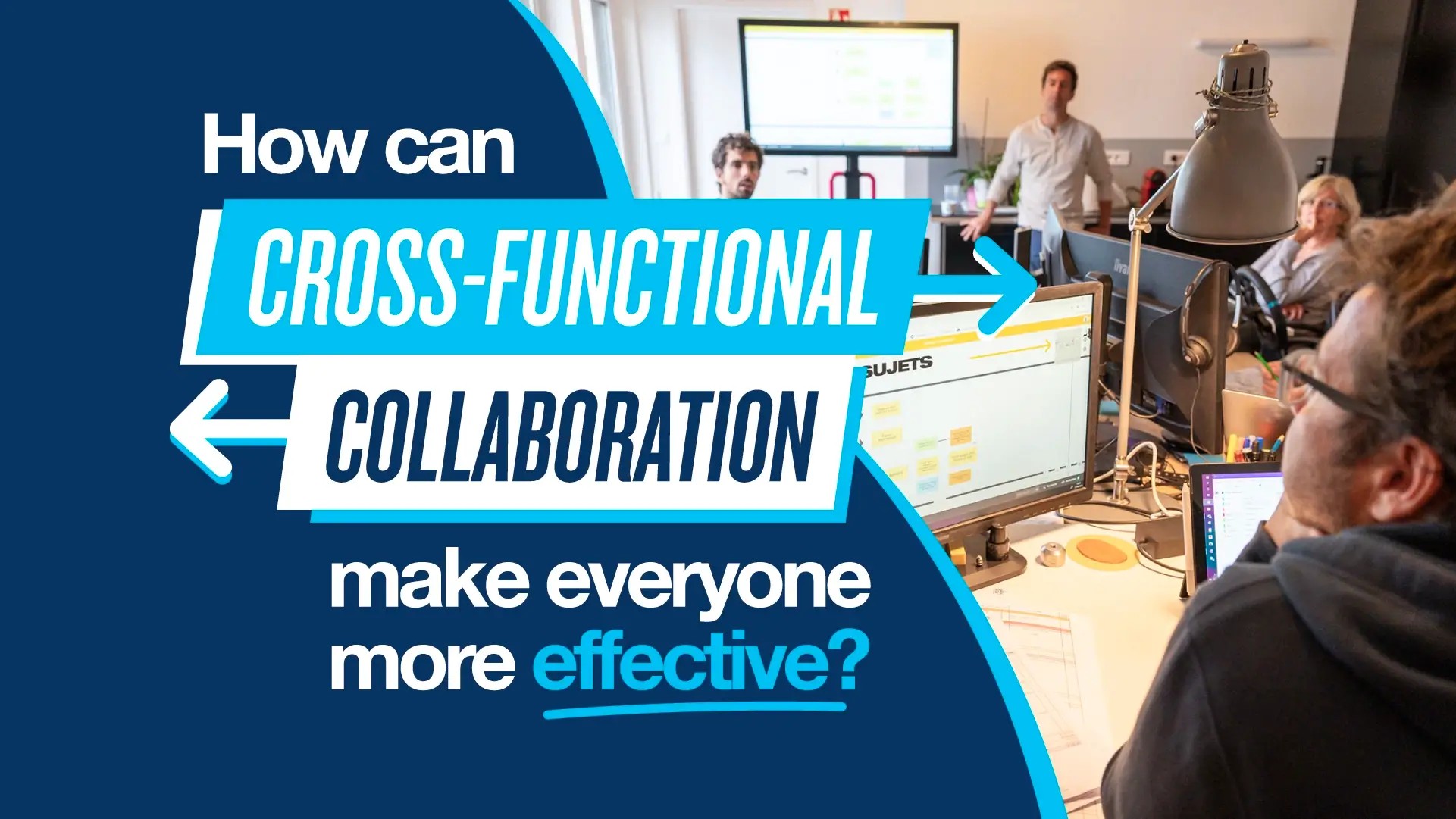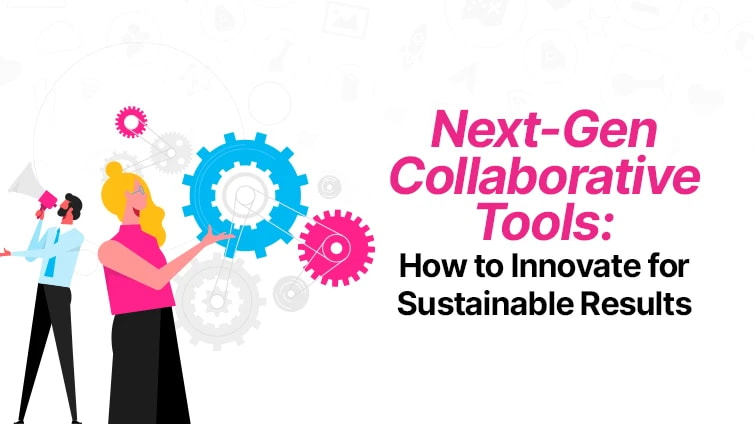Marketing: 5 effective ways to collect customer feedback with collaborative tools
Executive summary:
Customer feedback is not just nice to have. It is one of your most important advantages. It tells you exactly what works, what does not, and what needs to change.
However, most organizations make the process of gathering feedback far too complex. Fortunately, it does not have to be. With the right collaborative tools, you can gather customer insights fast, with less friction and more accuracy.
Here are 5 of the best ways to do it:
- Interactive surveys and live polls: These are quick and targeted ways to get straight to what customers want.
- Gamified challenges with rewards: Give them a reason to respond, and they will.
- Online whiteboards for idea sharing: Make feedback a conversation, not a chore.
- AI-powered feedback analysis: Let technology do the heavy lifting. Find patterns, fast.
- Community forums and discussion boards: Customers like talking. You just need to listen.
The bottom line? Stop guessing, and start asking. Your customers will tell you everything you need to know if you know how to listen.
Today’s customers do not just buy based on price or convenience. They buy based on trust. And nothing builds trust faster than real, unfiltered customer feedback.
The reality is, reviews and direct feedback hold more value than gold. They reveal what customers love, what frustrates them, and most importantly, what keeps them coming back. Businesses that listen, adapt, and act on feedback turn casual buyers into loyal advocates.
On the flip side, those who ignore it risk losing customers to competitors who care and pay attention.
In this article, we will cover everything you need to know about collecting feedback efficiently, leveraging collaborative tools, and working with your team to turn insights into action.
What is customer feedback?
Customer feedback is the measure of how a business is performing in the eyes of its customers.
It encompasses everything from detailed product reviews and survey responses to spontaneous social media comments and quiet behavioral shifts. More than just opinions, feedback captures the lived experience of the customer, revealing not only what works but why it works, and not just what fails but where the friction lies.
This information is a business’s most valuable asset, influencing everything from product development to brand reputation.
Thoughtful feedback fuels innovation, strengthens customer relationships, and transforms one-time buyers into lifelong advocates. When properly collected and analyzed, it becomes the foundation for strategic decisions that drive retention, loyalty, and long-term success.
Why customer feedback matters
When businesses fail to prioritize customer insights, they risk making decisions in the dark, relying on assumptions rather than real-world data.
Over time, this disconnect erodes trust, weakens brand loyalty, and leaves organizations vulnerable to competitors who genuinely care about their customers.
Here is what happens when customer feedback is not prioritized.
1. Missed market signals lead to irrelevance
Markets shift, customer preferences evolve, and new competitors emerge. Without a steady flow of feedback, businesses risk clinging to outdated strategies and failing to recognize changing consumer behaviors.
What worked yesterday may be ineffective tomorrow, and companies that ignore customer input often realize too late that their relevance has faded.
2. Eroding customer trust and loyalty
Customers want to feel heard, and when businesses dismiss or neglect their feedback, frustration grows.
Over time, dissatisfaction turns into disengagement, and once-loyal customers quietly take their business elsewhere. Brands that fail to acknowledge customer concerns signal that their priorities lie elsewhere, opening the door for competitors to step in and offer a better experience.
3. Product development becomes a guessing game
Without customer insights, businesses are left making assumptions about what features, improvements, or innovations matter most. This leads to wasted resources on updates that miss the mark while overlooking opportunities that could have driven growth.
Successful companies harmonize customer feedback into their development process to ensure their products truly meet demands.
4. Reputation suffers in a transparent world
In an era where online reviews and social media shape public perception, ignoring customer feedback can have a huge impact on a company's reputation.
Negative experiences no longer remain private. They become part of a brand’s digital footprint. Therefore, businesses that ignore complaints or fail to adapt to common pain points find themselves fighting an uphill battle against a compromised reputation.
How collaborative tools transform feedback collection
We now know customer feedback is like gold. Valuable, revealing, and essential for growth.
Unfortunately, feedback does not come neatly packaged and ready for use. It arrives in fragments, scattered across reviews, surveys, social media, and support tickets.
Also, not everyone communicates the same way, and customers rarely provide feedback in an orderly, structured fashion. Some are direct, others vague. Some offer detailed insights, while others leave one-word responses.
The challenge is not just gathering feedback but organizing it in a way that makes sense and drives action. This is where collaborative tools step in. They refine the process and turn scattered insights into a clear, strategic advantage.
Centralized data for smarter decision-making
Remember the days of calling customer service, only to be stuck on hold for what felt like hours, listening to the same looping elevator music? Frustrating, right? Businesses that still rely on scattered feedback systems are doing the same thing. Forcing customers to repeat themselves across multiple channels while valuable insights get lost in the noise.
Collaborative tools put an end to that chaos by gathering every piece of feedback. No more piecing together half-told stories. With a clear, organized view, businesses can quickly spot trends, pinpoint issues, and make informed decisions without delay.
Real-time analytics for proactive improvements
Imagine noticing a fire only after the smoke has filled the room. That is what happens when businesses wait too long to act on customer feedback.
Modern collaboration platforms come equipped with AI-powered features that help categorize negative feedback and concerns before they spiral into major problems.
Whether it is a sudden dip in product satisfaction or a recurring complaint about a new feature, businesses can adjust on the fly—fine-tuning their marketing, refining their products, and addressing issues before they become customer deal-breakers.
Seamless cross-team collaboration
Feedback does not belong in a silo. It touches marketing, sales, product development, and customer service, all of whom need to be on the same page.
Think of collaborative tools as the digital war room where teams gather, share insights, and assign tasks in real time. Instead of drowning in endless email chains or waiting for monthly reports, teams can tag colleagues, highlight urgent issues, and track progress in a shared workspace.
Seamless integration with the company's application portfolio ensures that feedback doesn't just sit there. It becomes meaningful action that improves the customer experience.

Find out how cross-functional collaboration can be the best way to make your teams more agile and break down communication silos.

Enhanced customer engagement and retention
Nobody wants to feel like their opinion disappears into a void. This is why businesses that actively collect and act on feedback create a stronger connection with their customers.
Interactive surveys, embedded chat prompts, and AI-powered feedback loops make the process easy, engaging, and even enjoyable. (Because who doesn't love efficiency?)
When customers see their input leading to product improvements, better service, or personalized offers, they tend to stick around and willingly spread the word about a company that actually listens.
5 effective ways to gather customer feedback using collaborative tools
Research shows that U.S. companies could save billions of dollars per year by focusing on keeping their existing customers happy.
To that end, companies have innovated and realized the power of customer feedback. They learned to embrace it as a key metric to guide their business strategies. That said, they still have trouble collecting these precious nuggets of information.
Here are the top 5 ways to effectively gather customer feedback using collaborative tools:
1. Interactive surveys and live polls
Ever wondered what your customers really think but never get a straight answer? That is because most people will not go out of their way to give feedback unless it is easy and effortless.
Real-time surveys and live polls meet customers where they are. Whether it is on your website, inside your app, or mid-purchase. With options like multiple-choice questions, star ratings, and anonymous responses, businesses get honest, actionable insights without forcing customers to jump through hoops.
2. Gamified challenges with rewards
Let’s be honest. Most people will not take the time to fill out a feedback form unless they have something to gain. But what if giving feedback felt more like a game than a chore?
Gamified challenges turn surveys into an interactive experience, rewarding customers with points, discounts, or exclusive perks in exchange for their opinions.
The result? Higher engagement, better insights, and customers who actually enjoy helping you improve your products and services.
3. Online whiteboards for idea sharing
Some of the best ideas come from customers, but if you are not making it easy for them to share, those insights get lost.
Online whiteboards turn feedback into a living, breathing conversation rather than a one-way form. Customers can contribute thoughts, vote on ideas, and help your team shape future products and services.
Instead of sifting through endless emails or disjointed comments, businesses get a clear, visual representation of what matters most.
4. AI-powered feedback analysis
Drowning in feedback but struggling to make sense of it all is a common theme in a growing marketplace. AI-powered tools take the heavy lifting off your plate.
Instead of manually sorting through survey responses, reviews, and support tickets, AI categorizes and highlights key trends in seconds. It identifies common complaints, flags emerging issues, and even detects sentiment shifts. This allows businesses to focus on fixing problems rather than wasting time searching for them.
5. Community forums and discussion boards
People love to talk. The hard part is getting people to feel comfortable to share.
Community forums give customers a space to share experiences, ask questions, and provide feedback in an organic way.
The best part? They are helping each other while also giving businesses a front-row seat to real, unfiltered conversations. Add AI-driven tracking, and suddenly, you have a goldmine of insights on what customers love, what frustrates them, and what they wish you would fix.
Key considerations when using collaborative tools for feedback
Clearly define feedback goals
If you do not know what you are looking for, you will not find anything useful.
Feedback should serve a purpose, whether it is refining a product, improving customer experience, or identifying weak points in your service. Without clear goals, the process degenerates into an aimless collection of thoughts with no direction.
Keep it user-friendly
People are busy. They will not spend time navigating an overly complicated feedback process just to do you a favor.
If your forms are long, confusing, or require unnecessary effort, customers will disengage. Make it simple, direct, and accessible, or you will lose the very insights you are trying to gain.
Provide context for better responses
Why should customers bother giving you feedback if they have no idea how it will be used?
If people feel their input is disappearing into a void, they will stop providing it. Clearly explaining why you need feedback and how it influences decisions is more empowering.
Follow up and take action
There is nothing more demoralizing than giving feedback and seeing no change.
Customers pay attention. If they see businesses acknowledge concerns, implement improvements, and communicate those updates, you build trust.
If they feel ignored? They will take their opinions (and their business) elsewhere.
Conclusion
Customer feedback is a restless tide, moving in murmurs and waves. To ignore it is to stand unmoving, hoping the water will bend around you, but it never does. It slips through cracks, scatters across channels, lost in the noise of missed opportunities.
Yet, with the right tools, what was once disorder becomes clear and efficient. Thoughts are collected, voices are heard, and insights are transformed. A business that learns to listen does more than survive the tide. It moves with it, shaping the current rather than being swept away.
Unlock your teamwork potential
For free, make your first steps to top-tier work efficiency with the Klaxoon Work Collaboration Platform.

